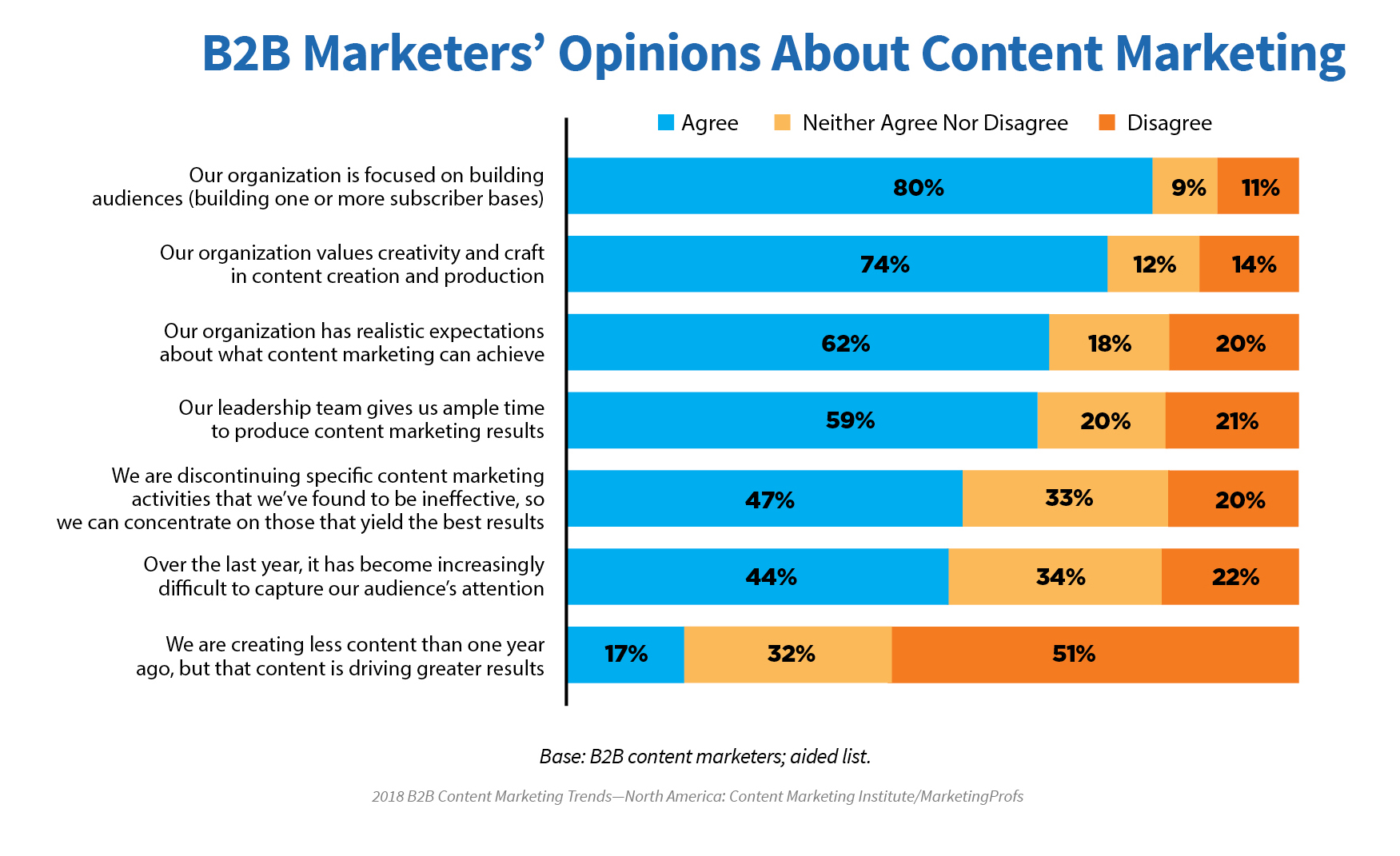Content brings new visitors to your site, as long as you promote it right.
Those new visitors turn into customers, making sales that provide a return on your initial investment in content creation.
At least, that's how it's supposed to work.
In the real world, things can get messy.
It's hard enough to tie content performance to revenue and profit — especially upper funnel content that isn't designed to make direct sales.
So if your daily blog posts and weekly emails aren't resulting in any sales at all, that's a big problem in terms of getting an ROI on your marketing spend.
Ironically, the problem might very well be that you're posting too much content, too often.
A recent blog post from The Content Marketing Institute explains how they've run into this exact problem recently.
Their daily content wasn't moving the needle, particularly on weekends.
There was too much too often, and a lot of it was posted and promoted on dates and at times where their audience is the least likely to check out a B2B-oriented blog post.
So how did they fix the problem? Here's what they did.
Instead of posting to the blog every day of the week, we’re moving to a Monday through Friday schedule.
Our daily alerts will continue to land in subscribers’ inboxes every weekday morning, but we’ll leave space on the weekends for you to pause and reflect.
We’re starting to see this trend in our own research, too. CMI’s 2018 study of B2B organizationsfound that almost half of B2B content marketers are creating less content than they did a year ago and driving better results from it.
[image source: The Content Marketing Institute]
You may be wrestling with similar questions – how much content should you produce?
Here’s how we’re approaching this latest experiment of forgoing new content on weekends.
We carefully considered these factors:
Daily publishing’s effect on overall site traffic
Organic search delivers the highest percentage of visitors on any given day. New posts account for a much smaller percentage of traffic overall.
Since traffic dips dramatically on the weekend, we’re not anticipating too much of a traffic hit.
Our search-optimized catalog still exists to answer questions no matter when someone is searching.
And the extra time in our schedules will help us further optimize our best articles to make sure people can find them through search.
Days attracting most email signups
We didn’t want to jeopardize the growth of our subscriber list, so we checked those numbers carefully.
Again, weekends proved to be the lightest days for conversions.
And, again, the door to becoming a subscriber is always open, whether we’ve published a fresh post that day or not.
There just might be fewer people approaching the door on the weekends.
Gut check by team
Although we did check the data before making this decision, there’s an element of going with our gut too.
We work Monday through Friday (most of the time) just as most of you do, so the need for time to pause and reflect resonates.
And we think, regardless of the effect on our traffic, most of our audience will appreciate the pause too.
(Depending how this experiment turns out, we’ll thank or blame Jay Acunzo for encouraging us to trust our intuition in his inspiring keynote presentation at Content Marketing World 2017.)
Take a good, close look at your own analytics. You may very well find that while some content thrives, other posts just don't seem to move the needle.
By trimming down your content calendar, focusing less on quantity and more on customer targeting and skillful content promotion, you can potentially save money while making more sales than ever before.
You can get the full story about their strategy shift in the full blog post from The Content Marketing Institute.
CHALLENGE Yourself to Profit!
Free Download: Build Your Profit-Generating Online Business With This Free Blueprint
Sign Up, follow the easy steps and You'll get the tactics, strategies & techniques needed to create your online profit stream. It's free!




